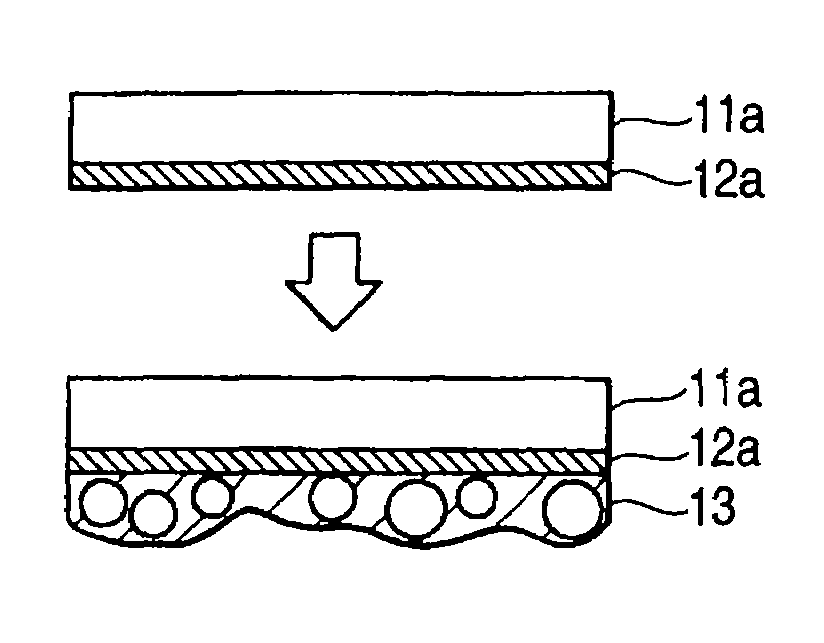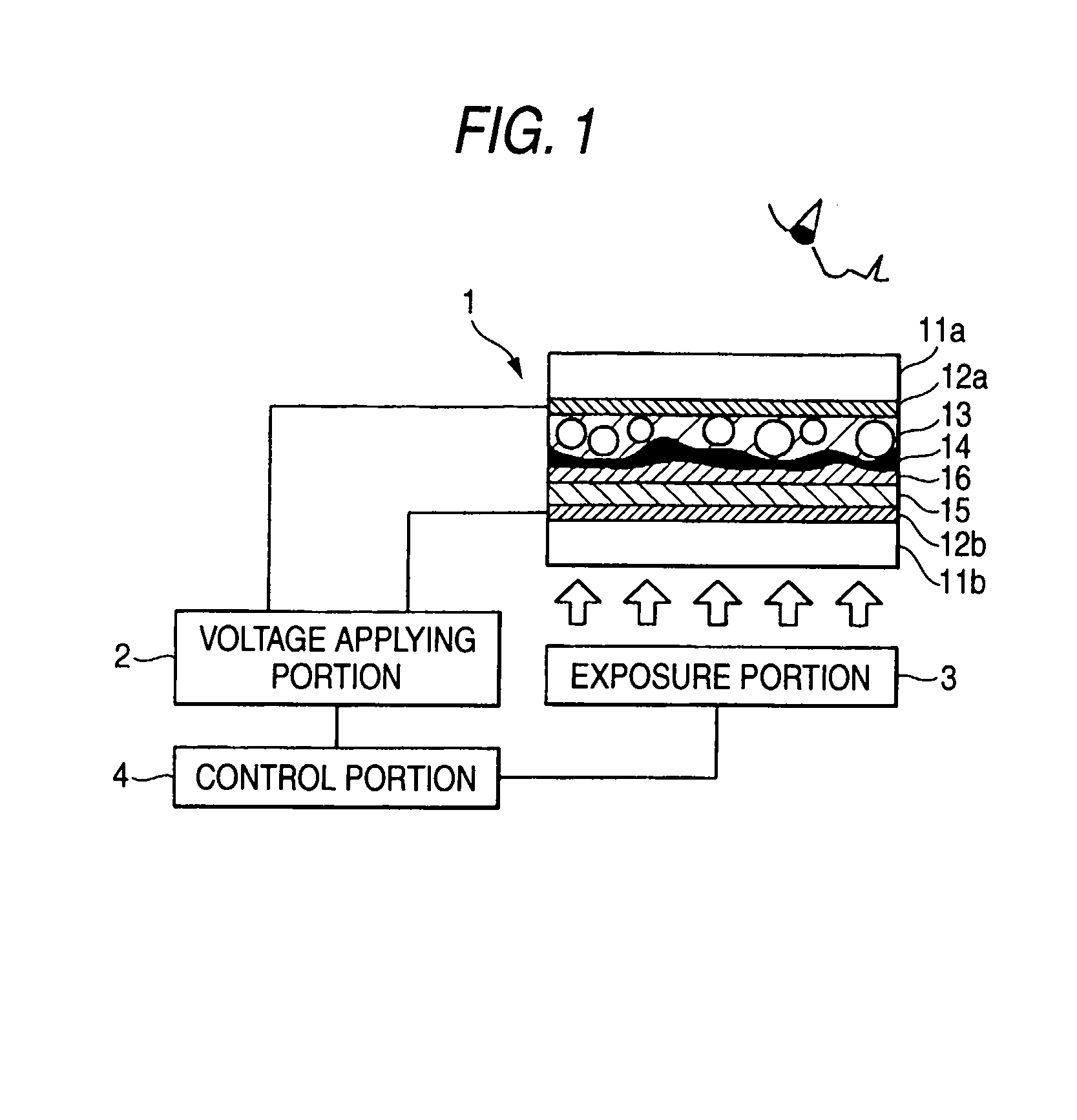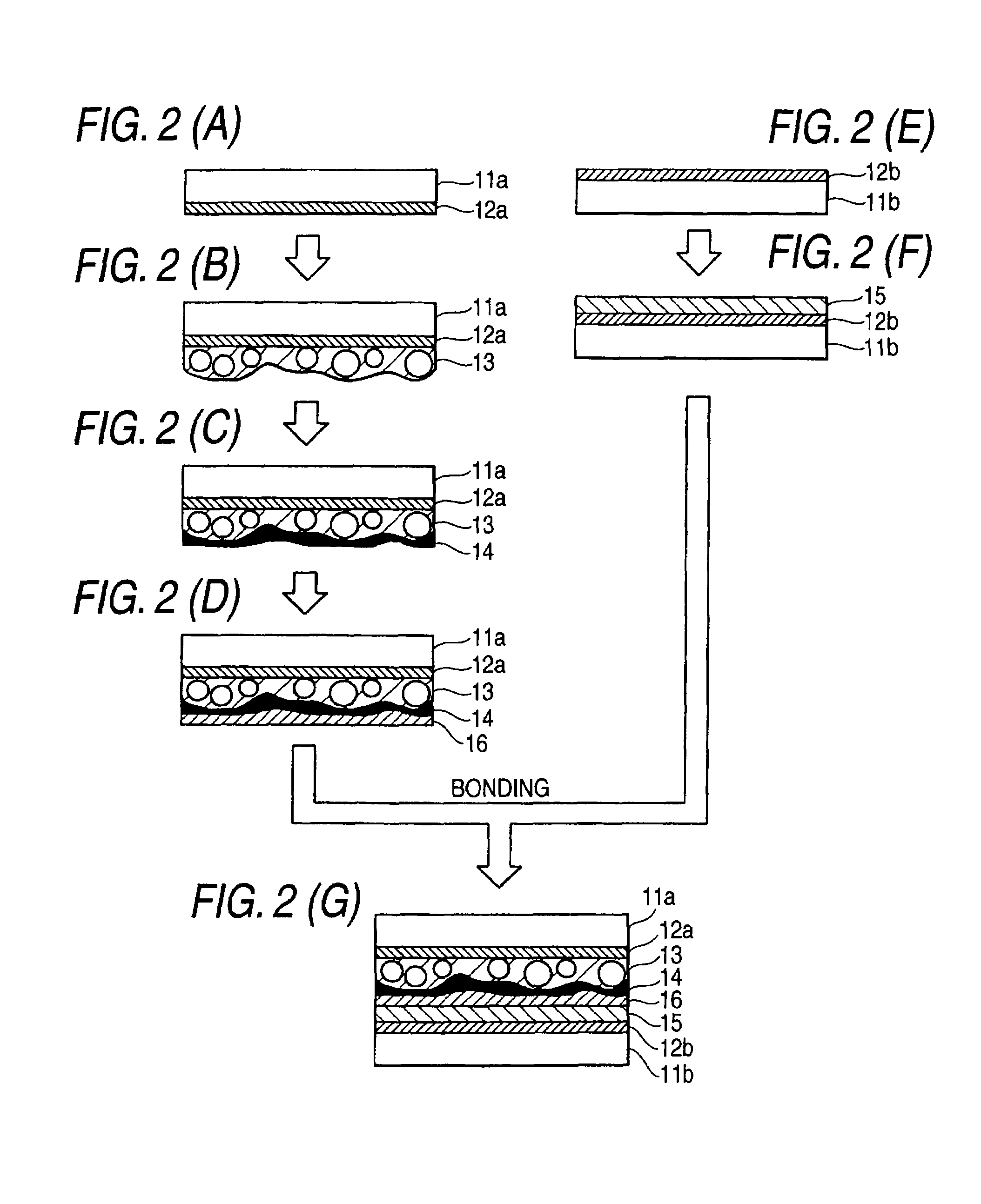Method for manufacturing display element
a technology of display elements and manufacturing methods, applied in the field of display elements, can solve the problems increasing the number of manufacturing processes, reducing the efficiency of the system, etc., and achieving the effect of reducing display quality
- Summary
- Abstract
- Description
- Claims
- Application Information
AI Technical Summary
Benefits of technology
Problems solved by technology
Method used
Image
Examples
first embodiment
[0036]FIG. 1 is a cross-sectional view showing a display element according to a first embodiment of the present invention. In FIG. 1, the same or like parts are designated by the same numerals as in FIG. 9, and the duplicate description maybe omitted. Reference numeral 16 denotes an adhesive layer. In this embodiment, a display element of optically writing type using a cholesteric liquid crystal is described as one example of the display element.
[0037]The display element 1 has a plurality of display function layers carried by a pair of substrates 11a and 11b to implement the display function. In this example, an electrode 12a, a display layer 13, a light shielding layer 14, an adhesive layer 16, a photoconductive layer 15 and an electrode 12b are provided in this order as the display function layers. Other outside construction and the operation principle are the same as for the display element according to the related art as described with reference to FIG. 9.
[0038]FIG. 2 is a proce...
second embodiment
[0097]FIG. 3 is a schematic process diagram, in cross section, showing a display element according to a second embodiment of the invention. In FIG. 3, the same or like parts are designated by the same numerals as in FIG. 1. In the second embodiment, the display element 1 of electric field writing type is shown. Namely, the photoconductive layer 15 is not provided.
[0098]On the substrate 11a, the electrode 12a, the display layer 13, the light shielding layer 14 and the adhesive layer 16 are laminated in the same manner as in the first embodiment, and as shown in FIG. 3(A). On the other hand, the electrode 12b is formed on the substrate 11b as shown in FIG. 3(B). The substrate 11a of FIG. 3(A) and the substrate 11b of FIG. 3(B) are bonded by the adhesive layer 16 to form the display element 1.
[0099]In the display element 1 of this construction, since the light shielding layer 14 is provided on the display layer 13, the excellent display quality can be obtained as with the first embodim...
third embodiment
[0103]FIG. 5 is a schematic process diagram, in cross section, showing a display element according to a third embodiment of the invention. In FIG. 5, the same or like parts are designated by the same numerals as in FIG. 1. In the first embodiment, the light shielding layer 14 as the display function layer is laminated on the display layer 13. However, the plurality of display function layers may be laminated on the display layer 13 and bonded with the substrate 11b. In this third embodiment, two display function layers are laminated on the display layer 13, and bonded with the substrate 11b.
[0104]The electrodes 12a and the display layer 13 are formed on the substrate 11a and the light shielding layer 14 and the photoconductive layer 15 are formed thereon, as shown in FIG. 5(A). The roughness on the surface of the display layer 13 are reduced by forming the light shielding layer 14, and further reduced by forming the photoconductive layer 15 to be almost flat in some cases.
[0105]The...
PUM
| Property | Measurement | Unit |
|---|---|---|
| visible wavelength | aaaaa | aaaaa |
| volume average particle diameter | aaaaa | aaaaa |
| wavelength | aaaaa | aaaaa |
Abstract
Description
Claims
Application Information
 Login to View More
Login to View More - R&D
- Intellectual Property
- Life Sciences
- Materials
- Tech Scout
- Unparalleled Data Quality
- Higher Quality Content
- 60% Fewer Hallucinations
Browse by: Latest US Patents, China's latest patents, Technical Efficacy Thesaurus, Application Domain, Technology Topic, Popular Technical Reports.
© 2025 PatSnap. All rights reserved.Legal|Privacy policy|Modern Slavery Act Transparency Statement|Sitemap|About US| Contact US: help@patsnap.com



